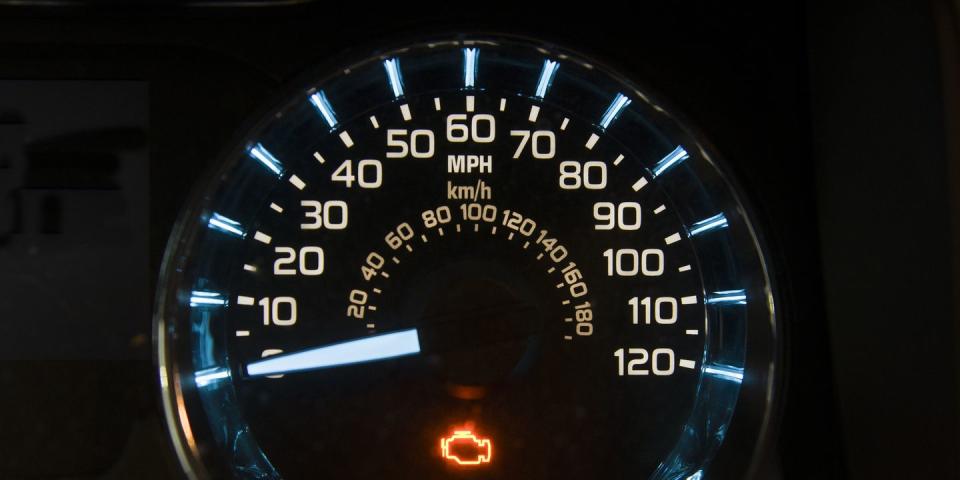Reset Your Check Engine Light at Your Own Risk

Neither black tape nor a magic marker is the solution when your car or truck's check-engine light comes on. When the light, which is shaped like the outline of an engine, illuminates, do not panic! And definitely do not attempt to cover up the warning. There's a much better way to deal with the problem. Here's how.
For starters, it's important to know what the dashboard light is actually telling you. In some vehicles, there are separate warning lights labeled Service Engine or Maintenance Due, versus a more traditional Check Engine light. If there's any confusion about which light you're looking at, check your owner's manual.
If it's a maintenance-related warning light, then you can relax, at least temporarily. This type of light is your car telling you that some routine work is due, such as an oil or air-filter change. Imagine if your teeth started glowing every six months when a cleaning is due. Granted, you'd look a little funny, but it wouldn't mean a root canal was automatically on the agenda.
What a Check-Engine Light Means
If you're positive that it's a check-engine warning light staring back at you from the gauge cluster, there are some key things to remember.
If the light is a steady orange or yellow and there is no perceptible change in how the car is driving, you don't need to stop the vehicle immediately. There is a good chance it could be a minor problem, but, as we've already noted, it's not smart to ignore the problem until the car does have noticeable issues. Sometimes, something as simple as a loose gas cap can be the culprit.
In the rare instance that the warning light starts flashing, however, pull over and stop the car. This almost always indicates a serious problem has occurred, and severe damage could be done by continuing to drive the car.
Assuming your instrument cluster is showing the more common solid amber or yellow check-engine warning, there's an easy-to-use tool that can help you understand what's going on long before you visit a repair shop or dealership. That's because every car built from the 1996 model year onward speaks the same basic language—and deciphering it takes far less time and money than you'd imagine.
Connecting to an OBD-II Port
You can find out what's ailing your engine through the vehicle's OBD-II port. An OBD-II port might sound like something R2-D2 would fall in love with and marry, but in reality it's a simple diagnostic connection found on every post-1996 car and truck. You plug an OBD-II scanner tool into it and, in most cases, out pops a code that tells you what the problem is. The scanner also allows you to clear the vehicle's internal code, which is what triggered the check-engine light. Do that, and the warning light will turn off.
More on that later. To shut off the warning light, and to know exactly what's wrong with your vehicle, you need a scanner. While a professional-grade OBD-II (also known as an OBD2) scanner might cost you hundreds of dollars, a wide range of perfectly good consumer models can be found online from between $20 and $100. Some are wireless; all plug into the OBD-II port.
By communicating with your phone, tablet, or laptop, the wireless units access an app that provides the diagnostic information that could indicate the problem with your car or truck. Some of these wireless scanners include the app in the purchase price and some do not. Do your homework, since not every app works with all types of wireless devices. (The two scanners shown here are ones we have had good experiences with in the Car and Driver test garage. Several staffers also report that they own low-priced wireless scanners that work extremely well.)

 Yahoo Autos
Yahoo Autos 